The Role of Technology in Enhancing Therapy for Children with Autism
Empowering Autism Therapy Through Innovative Technologies
Introduction to Autism Therapy and Technology Integration
Applied Behavior Analysis (ABA) therapy is a scientifically grounded approach that has proven effective in supporting children with Autism Spectrum Disorder (ASD). As technology advances, various innovative tools are beginning to complement traditional therapy methods, offering new avenues for enhancing communication, social skills, and behavioral outcomes. This article explores how emerging technologies are amplifying the benefits of ABA and other therapeutic interventions for children with autism, improving accessibility and tailoring treatment to individual needs.
Understanding Applied Behavior Analysis (ABA) Therapy and Its Impact
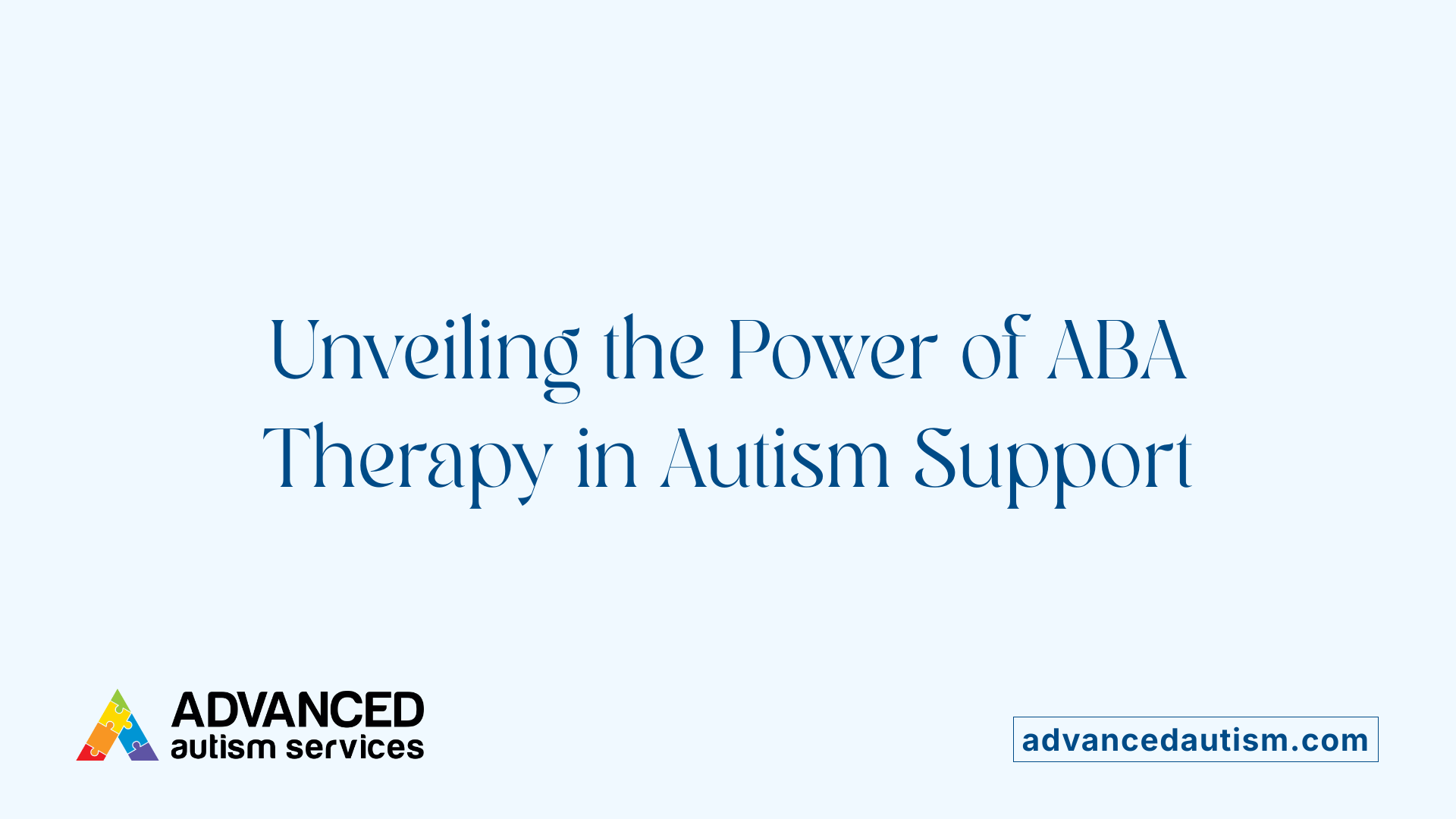
What is Applied Behavior Analysis (ABA) therapy and how does it help individuals with autism?
Applied Behavior Analysis (ABA) therapy is a scientifically validated approach that applies principles of learning theory and operant conditioning to improve essential skills in individuals with autism spectrum disorder (ASD). It focuses on increasing positive and helpful behaviors, such as communication, social skills, academic abilities, and self-care, while reducing problematic or harmful behaviors. ABA therapy is highly individualized, using detailed analysis of the context — including antecedents, actions, and consequences — to tailor interventions effectively.
Techniques used in ABA
ABA therapy employs several techniques to support developmental progress:
- Positive reinforcement: Rewarding desirable behaviors to encourage repetition.
- Discrete Trial Training (DTT): Structured learning sessions breaking down skills into small, manageable steps.
- Naturalistic approaches: Including the Early Start Denver Model (ESDM), which promotes learning through natural interactions.
- Pivotal Response Training (PRT): Targeting pivotal areas such as motivation and self-management.
- Peer-mediated and incidental teaching: Incorporating social interaction during typical activities.
Trained specialists, usually Board Certified Behavior Analysts (BCBAs), guide the therapy with ongoing data collection and analysis. Early Intensive Behavioral Intervention (EIBI) programs typically require intensive hours weekly to maximize outcomes.
Evidence supporting ABA's effectiveness
Research consistently demonstrates significant improvements in individuals receiving ABA therapy. Meta-analyses report moderate to high effect sizes in several critical areas:
| Outcome Area | Effect Size (g) | Description |
|---|---|---|
| IQ Scores | 0.740 | Large improvement in overall cognitive ability |
| Communication Skills | 0.650 | Enhanced ability to express and understand language |
| Expressive Language | 0.742 | Improved verbal expression |
| Receptive Language | 0.597 | Better understanding of spoken language |
| Adaptive Behavior | 0.422 | Increased independence in daily activities |
| Socialization Skills | 0.444 | Greater engagement and interaction with others |
Lower effectiveness has been observed in daily living skills, indicating areas for development. Moreover, ABA combined with supplementary technologies—such as mobile apps, artificial intelligence, and virtual reality—has shown promise in optimizing personalized interventions and engagement.
Overall, ABA therapy remains the most thoroughly studied and endorsed approach for improving developmental outcomes and enhancing quality of life for children with autism, especially when initiated early and delivered intensively.
The Professionals Behind ABA Therapy: Qualifications and Delivery

Roles of BCBAs and RBTs
ABA therapy is primarily delivered by trained professionals specialized in behavior analysis. The lead providers are Board Certified Behavior Analysts (BCBAs), who typically hold graduate degrees and are responsible for designing individualized treatment plans based on detailed assessments. BCBAs also supervise therapy sessions to ensure adherence to evidence-based protocols.
Supporting the BCBAs are Registered Behavior Technicians (RBTs) and licensed behavior therapists, who carry out day-to-day implementation of ABA interventions under supervision. They play a critical role in working directly with children to reinforce behavioral goals established by the BCBAs.
Settings for ABA Therapy
ABA therapy can be conducted in various environments to maximize effectiveness and skill generalization. Common settings include the child’s home, public or private schools, outpatient clinics, and community spaces. Tailoring the setting to each child's needs helps foster real-world applicability of learned skills.
Professional Qualifications and Certifications
To ensure high quality care, ABA therapists must possess recognized qualifications. The most widely accepted credential is the BCBA certification, which requires:
- A graduate degree in applied behavior analysis or related fields
- Completion of supervised practical experience hours
- Passing the Behavior Analyst Certification Board (BACB) exam
Additionally, many states require licensure to practice, with specific guidelines varying by jurisdiction. ABA therapists generally possess backgrounds in psychology, education, or special education, combined with training in behavioral assessment, intervention, and data analysis. These credentials uphold professional standards and promote effective, evidence-based ABA therapy delivery.
Key ABA Techniques Facilitated by Technology
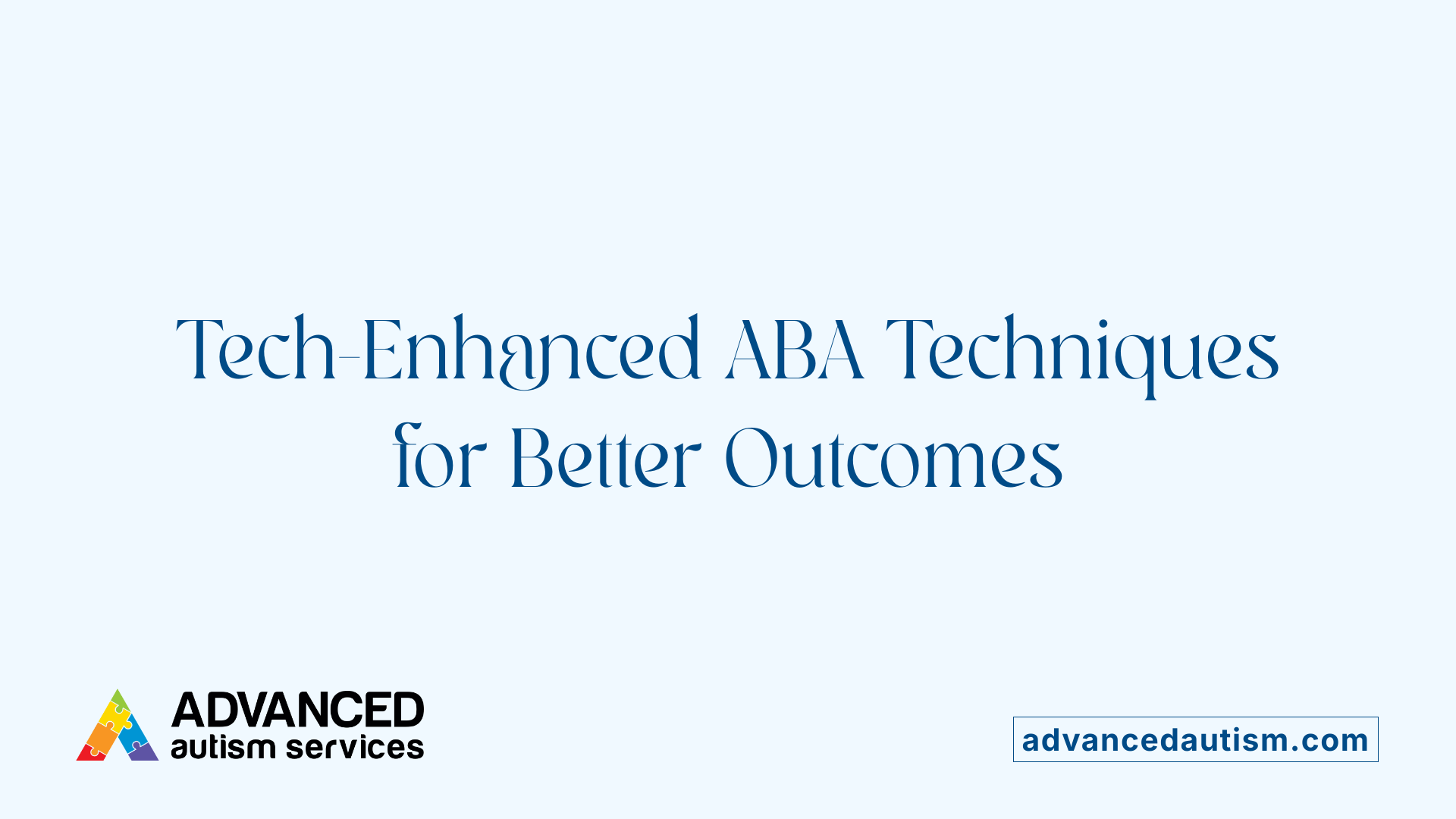
What are the common techniques used within ABA therapy to support behavioral improvement?
Applied Behavior Analysis (ABA) therapy uses several effective techniques to encourage positive behavioral changes and skill acquisition in children with autism. One fundamental method is positive reinforcement, where desired behaviors are rewarded to increase their frequency. This technique helps children learn appropriate responses by associating actions with positive outcomes.
Discrete Trial Training (DTT) offers a structured and repetitive approach, involving one-on-one sessions where specific skills are taught using clear cues and immediate reinforcement. It breaks down complex behaviors into smaller, manageable steps, making learning focused and measurable.
To promote learning in everyday contexts, Natural Environment Training encourages children to engage and learn through play and real-life situations rather than formal settings. This helps generalize skills across different environments.
Modeling and video-modeling are also important techniques in ABA. They involve demonstrating behaviors for children to imitate, leveraging observational learning. Video-modeling, in particular, has proven effective as it provides a less intimidating and more motivating way for children with autism to learn new skills by watching recorded examples.
Other methods employed in ABA include prompting and fading, which gradually guide children towards independent performance, behavior chaining to teach complex sequences, redirection to minimize problematic behavior, and extinction procedures to reduce undesired behaviors by withholding reinforcement.
Furthermore, communication tools like the Picture Exchange Communication System (PECS) and visual models help support language development.
Technology enhances these ABA techniques significantly. Apps and video tools provide personalized activities; wearable devices and AI-driven data collection enable real-time monitoring and adaptation to individual needs, increasing therapy effectiveness.
In combination, these ABA techniques form a comprehensive approach supported by technological advances to promote meaningful behavioral improvement and skill development in children with autism.
Integration of Assistive Communication Technologies
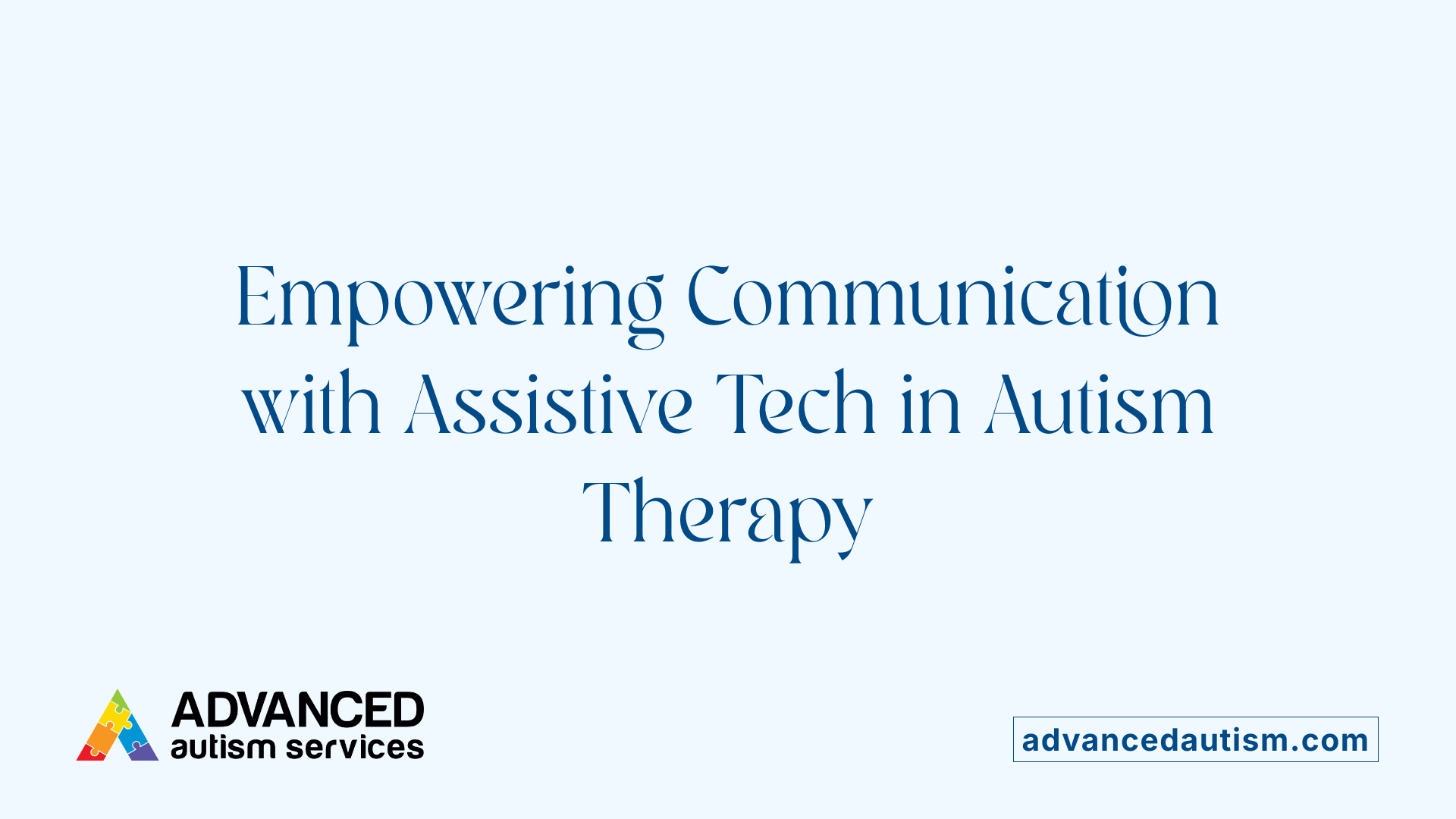
Communication Apps for Autism
Assistive communication apps have become vital tools in supporting individuals with autism spectrum disorder (ASD). Popular apps such as Symbotalk, Proloquo2Go, Leeloo, Otsimo, ABC Autismo, Autastico II, and Dino Tim are designed to enhance speech and behavioral abilities. These tools provide a user-friendly platform for children and adults facing challenges with verbal communication, allowing them to express needs and emotions more effectively.
Personalized and Adaptive App Features
Many of these applications come equipped with personalized and adaptive features that tailor the communication experience to individual needs. For example, some apps adjust activities based on a user's progress and preferences, creating a more engaging learning process. This customization helps maintain motivation and ensures that users work at a comfortable pace, which can be especially beneficial given the diverse spectrum of communication challenges within ASD.
Impact on Speech and Behavioral Skills
The introduction of assistive communication apps has shown to improve both speech and behavioral skills in users. They offer a visual and interactive approach to language learning and social interaction, which is less intimidating than traditional methods. The use of these technologies in therapy settings has demonstrated improved communication clarity, increased social engagement, and a reduction in frustration-related behaviors. Overall, these applications serve as valuable components in comprehensive autism support programs, enhancing the quality of life for many individuals with ASD.
Emerging Technologies: AR, VR, and Robotics in Autism Therapy
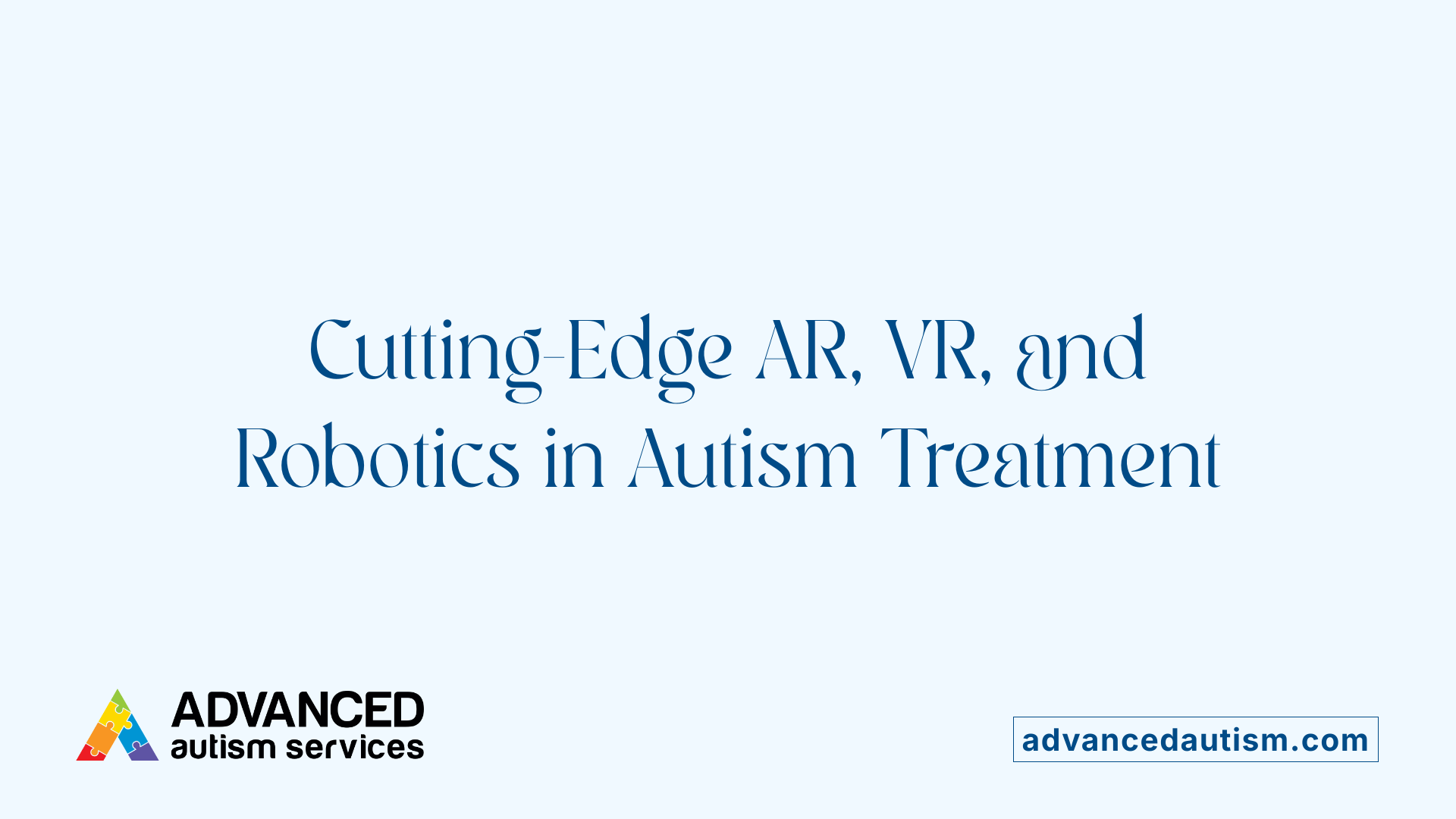
How Does Augmented Reality (AR) Help with Emotion Recognition in Autism Therapy?
Augmented Reality (AR) technology offers innovative tools to assist individuals with autism in recognizing emotions, a skill often challenging for them. Devices like Google Glass use AR overlays to interpret and display facial expressions in real-time. This immediate feedback helps users better understand social cues and emotional states during interactions, enhancing their social communication abilities with less stress.
What Role Does Virtual Reality (VR) Play in Social Skills Training?
Virtual Reality (VR) creates immersive, controlled environments that simulate real-world social situations. For children and adults with autism, VR-based therapy provides a safe space to practice and improve social skills without fear of judgment or failure. Studies indicate that VR interventions can improve social functioning by up to 30%, offering realistic scenarios where users learn and rehearse responses to social cues at their own pace.
How Are Robots Used to Foster Social Interaction and Autism Assessment?
Robotics, exemplified by the NAO robot, are increasingly integrated into autism therapy. These robots engage children through interactive play, teaching social skills such as turn-taking, eye contact, and emotional understanding. Additionally, robots are used to assess autism by analyzing interaction patterns and responses, providing objective data to support diagnosis and tailor interventions.
These emerging technologies—AR, VR, and robotics—are reshaping autism therapy by making it more interactive, personalized, and effective, offering promising paths to improve social communication and emotional recognition for individuals on the spectrum.
Wearable and Neural Interfaces Enhancing Therapy
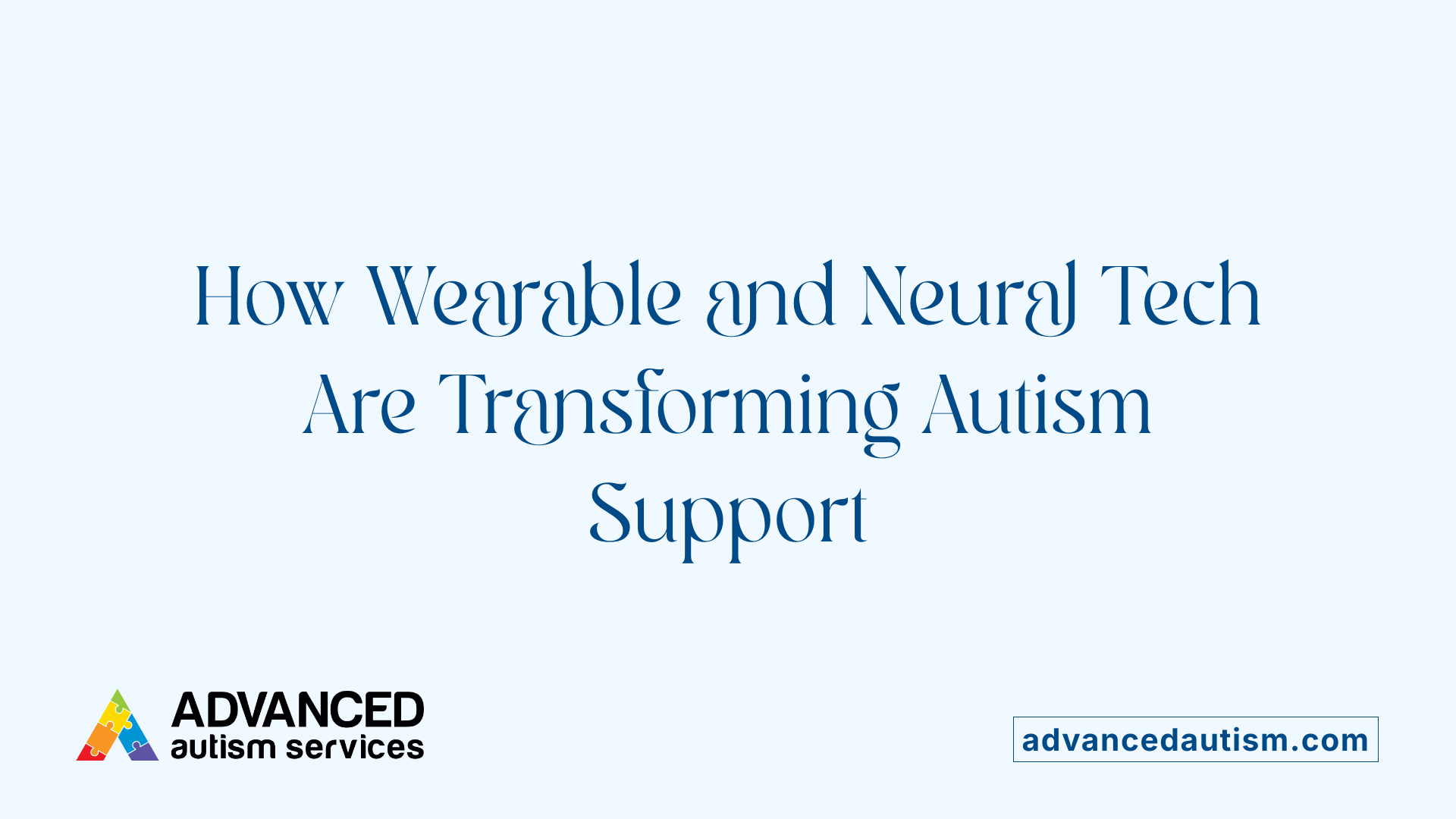
How Do Smartwatches and Hearing Aids Support Autism Therapy?
Wearable assistive technologies such as smartwatches and advanced hearing aids play a significant role in facilitating real-time social interaction and communication for individuals with autism. Smartwatches can provide discreet prompts or reminders, aiding behavior regulation and social engagement. Meanwhile, modern hearing aids go beyond amplifying sound by assessing environmental noise and enhancing relevant sounds, which helps autistic users better focus on conversations and social cues within complex settings.
How Do These Devices Support Real-Time Social Interaction?
These wearable devices are designed to offer immediate support during social interactions. For instance, smartwatches may deliver timely feedback or cues to help individuals interpret social situations or manage stress. Hearing aids improve auditory processing, enabling users to detect voice tones and other subtle auditory signals more clearly, which is crucial to effective social communication.
What Role Do Neural Command Interfaces Play in Autism Therapy?
Neural command interfaces are an emerging technology aimed at those with severe speech impairments. These systems interpret brainwave signals to enable communication by integrating with speech-generating devices. This technology provides another pathway for nonverbal individuals with autism to express needs, thoughts, and emotions more effectively, paving the way for greater independence and interaction.
Together, these wearable and neural technologies offer innovative methods to enhance communication and social skills in autism therapy, complementing traditional behavioral approaches with real-time, personalized support.
Artificial Intelligence and Machine Learning in ABA Intervention
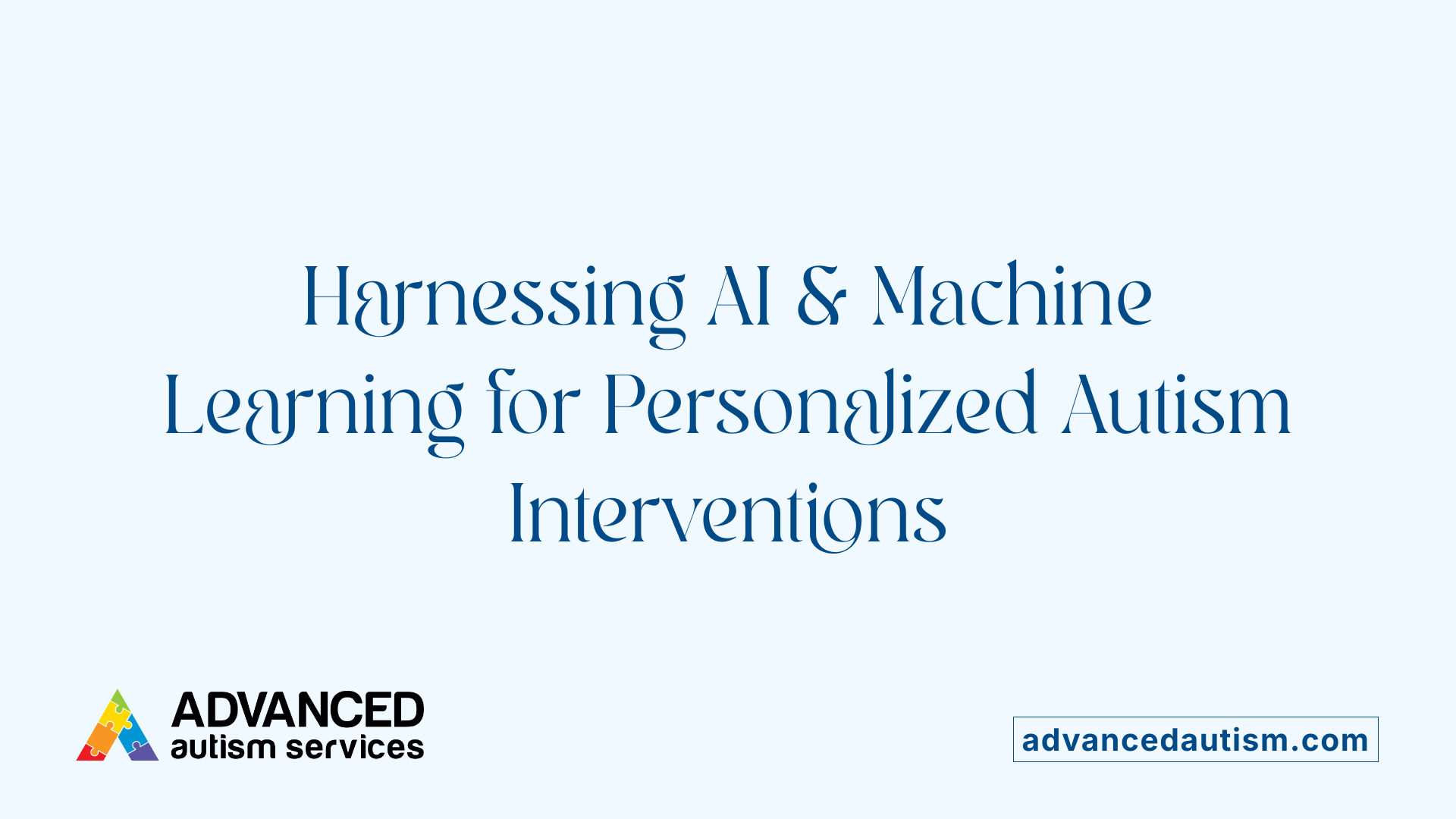
How do AI and machine learning predict treatment outcomes in ABA?
Artificial Intelligence (AI) and machine learning models are increasingly utilized to predict outcomes of Applied Behavior Analysis (ABA) therapy programs for children with autism. By analyzing large datasets of past treatment responses, these technologies can identify patterns that forecast how an individual might progress with specific intervention strategies. This predictive capacity allows therapists to anticipate which approaches are most likely to succeed, optimizing therapy planning and improving overall effectiveness.
In what ways is personalized intervention design enhanced by AI?
AI-driven systems support the customization of ABA interventions by adapting programs to the unique behavioral data of each child. Machine learning algorithms analyze ongoing performance and physiological data, enabling dynamic adjustments that better align with the child's evolving needs. This personalized approach can enhance engagement, accelerate skill acquisition, and increase the relevance of therapy activities, ultimately improving outcomes.
How does data-driven resource prioritization work with AI in ABA therapy?
By leveraging AI to process complex datasets—including therapy responses, physiological signals, and environmental factors—clinicians can prioritize resources and focus attention where they are most needed. These tools help allocate therapy time efficiently, identify children who may benefit from intensified intervention, and highlight particular behaviors or skills that require targeted support. Consequently, AI supports more strategic use of limited therapy resources, making ABA interventions more accessible and impactful.
Overall, integrating AI and machine learning into ABA therapy is transforming the field by enabling evidence-based customization, improving treatment predictions, and optimizing the use of clinical resources for children with autism.
IoT-Enhanced ABA Therapy: Data Collection and Environmental Monitoring
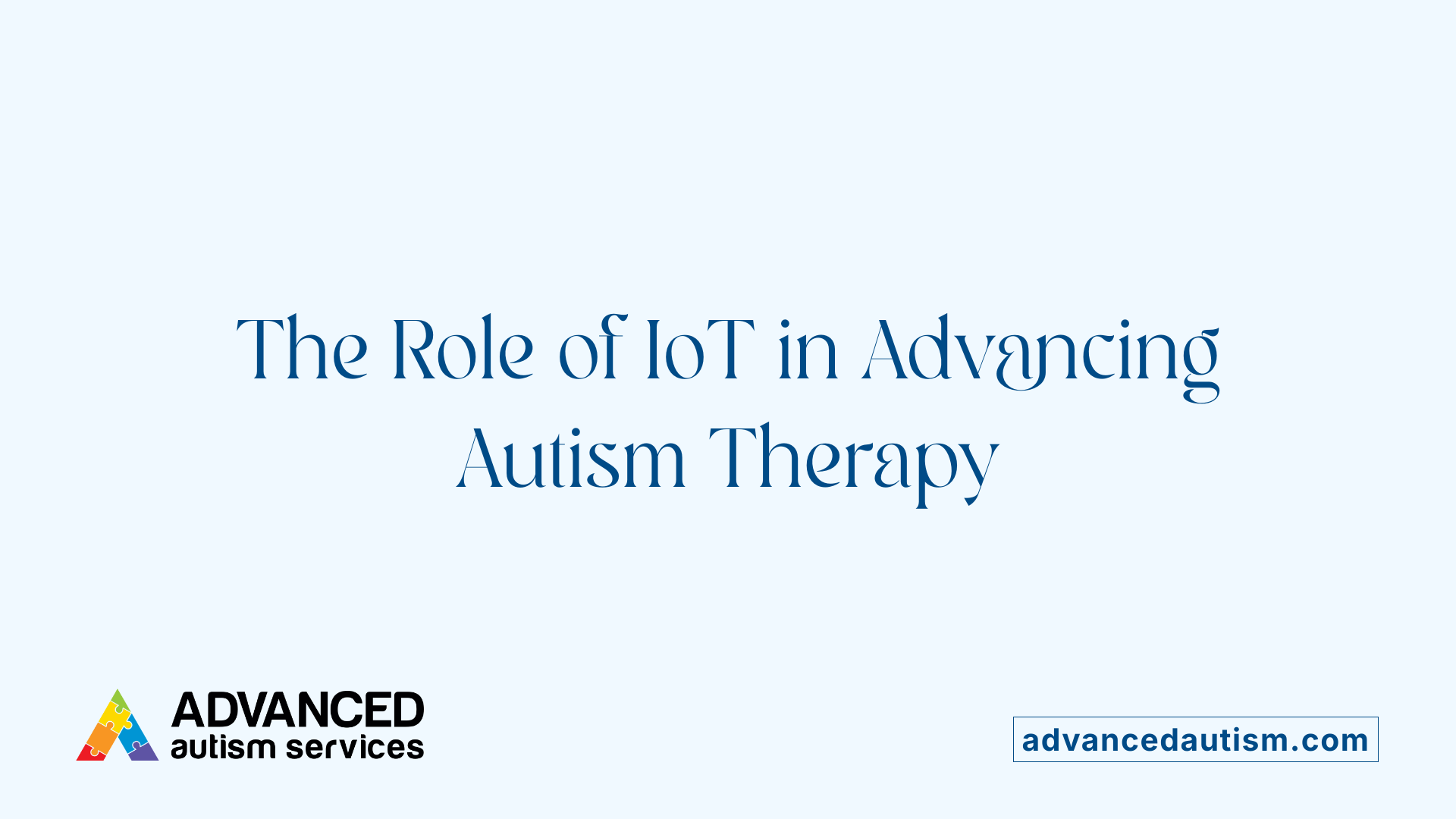
What role does data collection play in ABA therapy for autism?
Data collection is fundamental to Applied Behavior Analysis (ABA) therapy for autism. It provides objective, measurable insights into a child's behavioral patterns and responses to interventions, enabling therapists to optimize treatment plans. Traditional data collection methods, such as tracking frequency and duration of behaviors, are critical yet can be time-consuming and prone to errors.
Physiological sensor integration
The integration of physiological sensors into ABA therapy represents a significant advancement. Devices measure signals such as Blood Volume Pulse and Electrodermal Activity (EDA or GSR), which offer real-time indicators of a child's physiological arousal and emotional states during therapy sessions. These sensors capture highly individualized data that can correlate with behavioral performance, offering therapists deeper insight into learners' internal states that may not be externally visible.
Environmental factors impacting learning
Environmental sensors complement physiological data by monitoring classroom variables like CO2 levels, humidity, and temperature. Research shows that elevated CO2 levels within therapy settings are linked to increased prompts and errors in students’ responses. This suggests that optimizing classroom air quality and other environmental conditions can directly influence the effectiveness of ABA sessions.
Real-time monitoring and emotion recognition
The fusion of IoT devices with AI algorithms facilitates real-time emotion recognition and performance monitoring. This digital feedback loop supports therapists in adapting their strategies instantly based on physiological and environmental cues. Preliminary studies indicate a relationship between lower electrodermal activity and positive learning outcomes, highlighting the potential for these technologies to tailor interventions dynamically.
By embracing IoT-enhanced ABA systems that integrate physiological and environmental sensing with artificial intelligence, therapy can become more personalized, responsive, and accessible. This approach not only advances the science behind behavioral interventions but also promises improved overall outcomes for children with autism.
Benefits and Challenges of Technology Integration in Autism Therapy
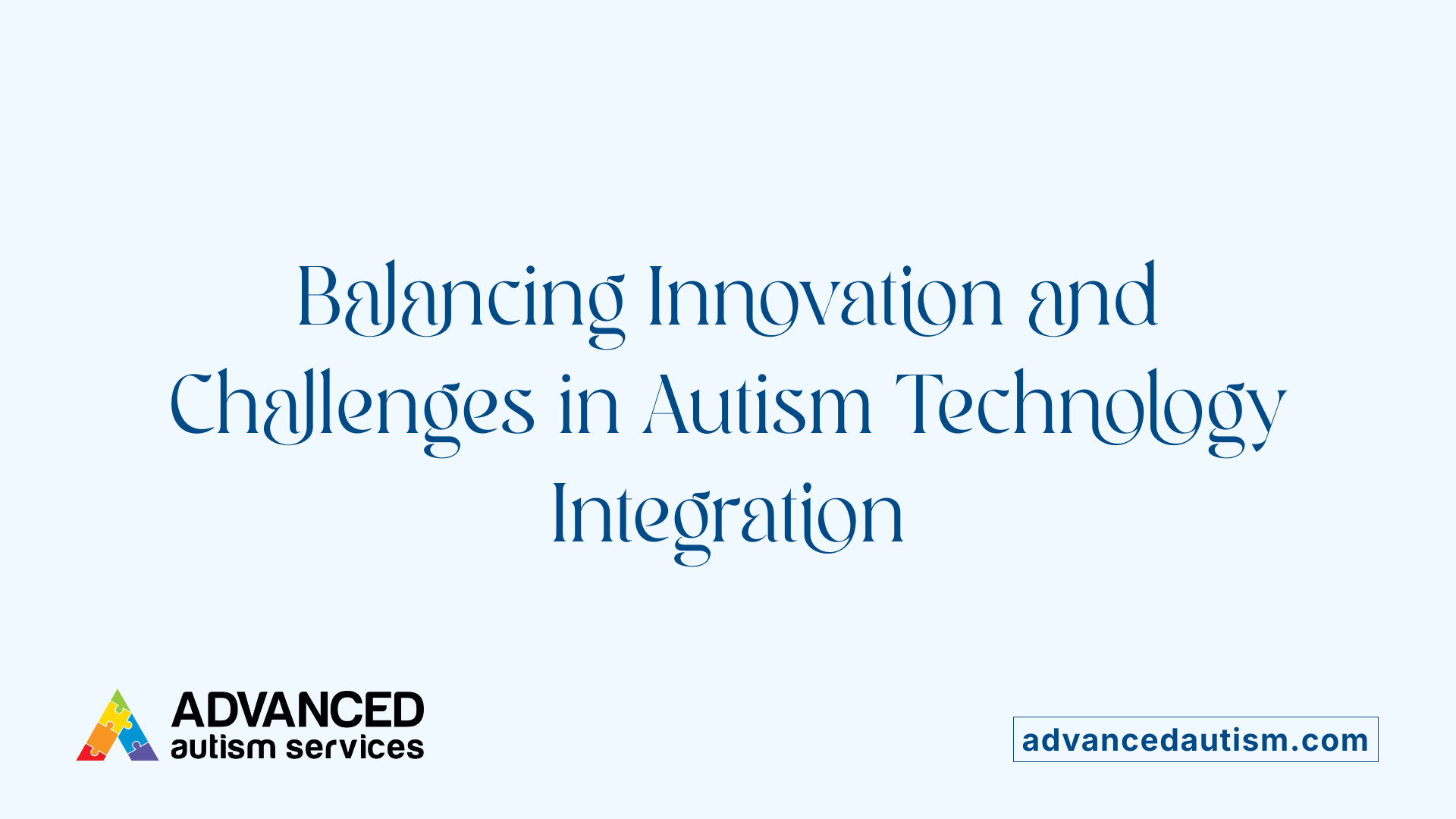
How Does Technology Improve Behavioral Outcomes in Autism Therapy?
Technology has significantly advanced autism therapy by enhancing behavioral and communication outcomes. Mobile apps like Proloquo2Go and Symbotalk improve speech and behavioral skills through personalized and adaptive activities. Virtual reality (VR) interventions have demonstrated social skills improvements of up to 30% by simulating real-life social situations. Moreover, integrating Artificial Intelligence (AI) into Applied Behavior Analysis (ABA) programs allows for personalized interventions based on individual behavioral data, leading to a 40-50% improvement in behavioral outcomes when coupled with real-time mobile progress tracking.
What Are the Accessibility and Affordability Benefits?
Despite ABA's proven effectiveness, its resource-intensive nature often limits access for many families. Emerging Internet of Things (IoT)-enhanced ABA systems, such as the 3i-learning system, utilize physiological and environmental sensors alongside AI to provide real-time data, making therapy more affordable and accessible. Telehealth platforms further broaden reach, enabling remote therapy sessions. Additionally, wearable devices like smartwatches and augmented reality headsets facilitate social communication, supporting children in various environments without the need for constant therapist presence.
What Challenges Exist in Implementing Technology in Autism Therapy?
While technology offers promising advantages, challenges remain in implementation. High costs of advanced devices and physiological sensors can be prohibitive, necessitating development of lower-cost solutions. Ensuring user acceptance is critical; however, studies show teachers view IoT-enhanced ABA systems as effective and acceptable, indicating positive feasibility. Moreover, comprehensive longitudinal research is lacking, with only a minority of studies using rigorous comparative designs to establish best practices. Finally, environmental factors such as classroom CO2 levels must be managed to optimize learning outcomes, revealing the complexity of integrating technology within diverse real-world settings.
Future Directions in Technology-Driven Autism Therapy
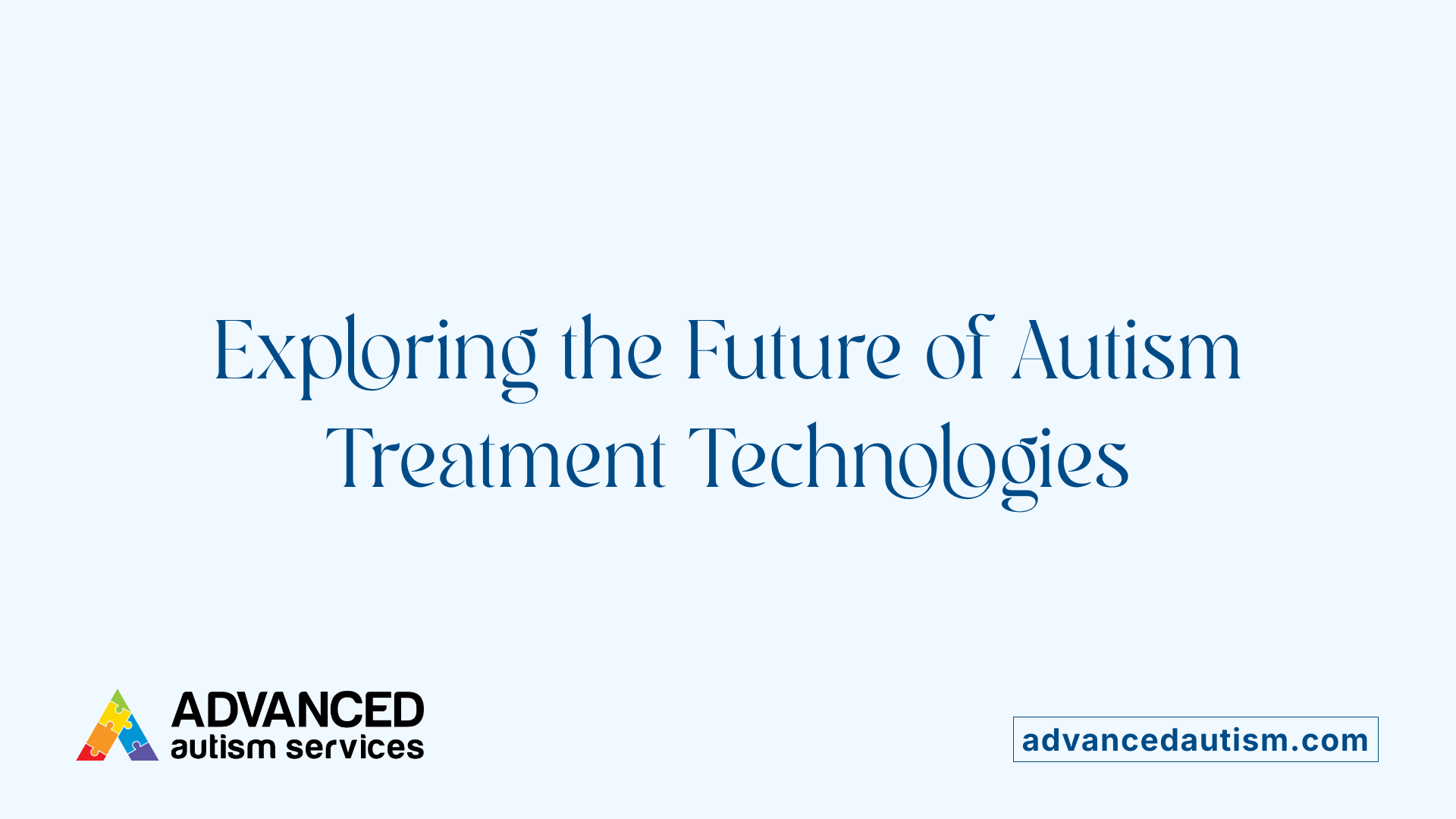
What Are the Emerging Innovations in Autism Therapy Technology?
The future of technology-driven autism therapy is geared toward making treatments more accessible and effective through several promising advancements.
How Will Lower-Cost Sensors and Devices Impact Therapy?
Developing affordable physiological sensors is essential for expanding the reach of therapy. Lower-cost devices will enable widespread deployment of IoT-enhanced systems to monitor vital signs like blood volume pulse and electrodermal activity during therapy sessions. This democratization of technology will help families and therapists from diverse backgrounds access real-time data to tailor interventions effectively.
What Improvements Are Expected in Emotion Recognition?
Enhanced emotion recognition capabilities are on the horizon. Integrating advanced algorithms with physiological and environmental data will improve the accuracy of identifying emotional states in autistic individuals. This refinement will facilitate better understanding of a child's experience and allow therapies to adapt dynamically to their emotional needs, improving engagement and outcomes.
How Will Advanced Statistical and AI Models Contribute?
The application of sophisticated statistical models and artificial intelligence will deepen insights into the complex interactions between physiological signals, environmental factors, and behavioral responses during therapy. Machine learning approaches will not only predict treatment effectiveness but also optimize personalized program recommendations. This integration promises more precise and data-driven autism interventions.
Overall, these future directions emphasize the continued fusion of technology and behavioral science to enhance personalized care and improve the quality of life for individuals with autism.
Conclusion: Towards a More Accessible and Effective Therapy Future
Technology is reshaping the landscape of autism therapy, working hand-in-hand with established behavioral approaches like ABA to deliver more personalized, effective, and accessible interventions. From assistive communication devices and virtual reality to AI-driven analytics and IoT-enabled data collection, these innovations empower therapists and families with richer insights and tools. As ongoing research and development unlock new possibilities, integrating technology holds promise to improve the lives of children with autism, ensuring therapy is not only more engaging but also better tailored to each child's evolving needs.
References
- Technology and Applied Behavior Analysis (ABA)
- Enhanced Applied Behavior Analysis (ABA) for Special ...
- Applied Behavior Analysis in Children and Youth with ...
- The effectiveness of applied behavior analytic interventions ...
- Top 7 Technological ABA Innovations Transforming Therapy
- How to Become an Applied Behavior Analyst (ABA) Therapist
- How to Become an ABA Therapist - School of Education
- Applied Behavior Analysis (ABA)
- Find an Applied Behavioral Analysis (ABA) Therapist
- ABA Therapy Services Serving Manhattan & Brooklyn







